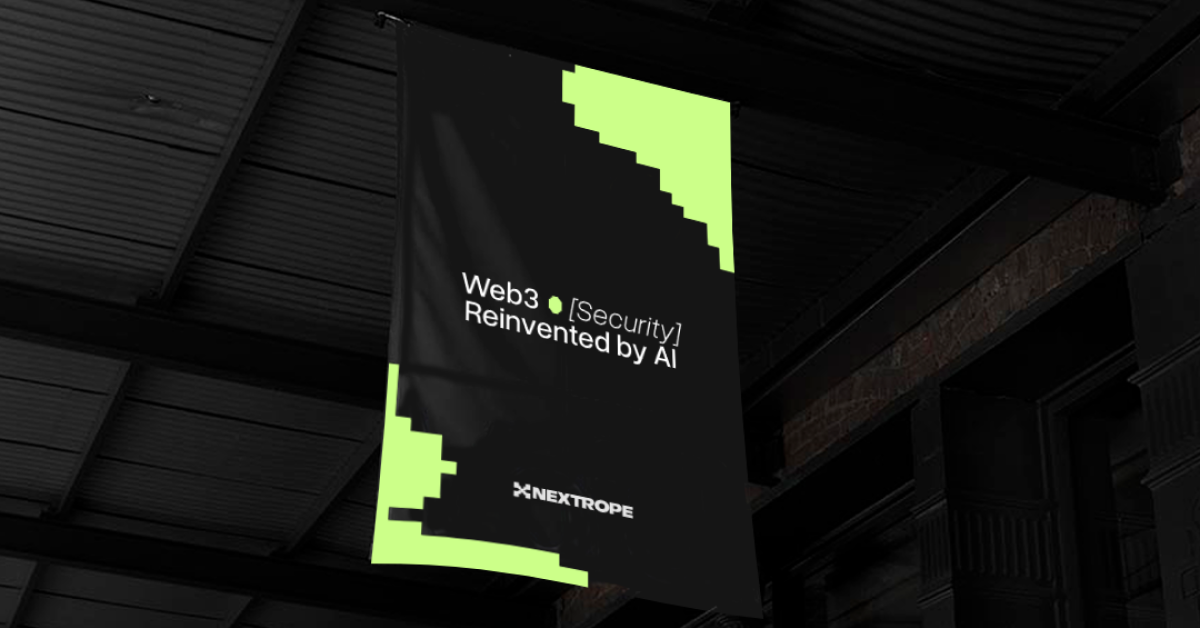
Next Enterprises Sp. z o.o. realizuje projekt współfinansowany z Funduszy Europejskich pt. „Audyt smart kontraktów z wykorzystaniem sztucznej inteligencji”. Celem projektu jest opracowanie i wdrożenie zaawansowanego modelu AI, który pozwoli na efektywną analizę, identyfikację luk oraz audyt bezpieczeństwa smart kontraktów, uwzględniając ich złożoność i unikalność.
Zadania zaplanowane w projekcie:
- Opracowanie modelu AI uczonego na słowach kluczowych Solidity;
- Opracowanie efektywnego modelu w warunkach symulowanych;
- Badanie analizy nieprzewidywalności działania skompilowanego kodu w środowisku Ethereum Virtual Machine (EVM) w kontekście opracowywanego modelu w kontrolowanym środowisku;
- Walidacja modelu w warunkach rzeczywistych.
Grupy docelowe:
- Wyspecjalizowane firmy audytorskie skoncentrowane na smart kontraktach;
- Firmy, które opracowują i/lub wdrażają smart kontrakty na różnych platformach;
- Giełdy, dostawcy portfeli, zdecentralizowane aplikacje (dApps) w sektorze blockchain;
- Organizacje odpowiedzialne za regulowanie technologii blockchain, takie jak agencje rządowe lub branżowe podmioty ds. zgodności;
- Osoby odp. za bezpieczeństwo smart kontraktów, programiści.
Rezultaty projektu:
Zastosowanie opracowanego narzędzia umożliwi przeprowadzanie zautomatyzowanego i efektywnego audytu smart kontraktów. Model dostarczy szczegółowych informacji oraz rekomendacji dotyczących optymalizacji kosztów transakcyjnych, a także zwiększenia wydajności kontraktów. Dzięki temu użytkownicy będą mogli podejmować świadome decyzje, zwiększając bezpieczeństwo i efektywność operacji w ekosystemie blockchain. Kluczowe korzyści wynikają z wykorzystania modelu przeszkolonego na bazie kodu smart kontraktów oraz zbioru audytów i wykrytych w nich luk. Ponadto, wprowadzenie założeń teorii chaosu umożliwi dokładniejsze prognozowanie ryzyk i anomalii.
Efektem wdrożenia zaawansowanego modelu AI będzie zwiększenie bezpieczeństwa, efektywności i dostępności technologii blockchain dla użytkowników końcowych. Przełoży się to na konkretne korzyści społeczne i gospodarcze, takie jak:
- Bezpieczeństwo Ekonomiczne
- Bezpieczeństwo Biznesowo-Ekonomiczne
- Zwiększenie Zaufania Publicznego
- Optymalizacja Kosztów Transakcyjnych
- Wsparcie dla Innowacji i Przedsiębiorczości
- Edukacja i Świadomość Społeczna
Wartość projektu: 4 173 953,24 PLN
Wkład Funduszy Europejskich: 3 090 156,39 PLN
#FunduszeUE #FunduszeEuropejskie
Dotychczasowe wyzwania w audycie inteligentnych kontraktów
Smart kontrakty stały się nieodzownym elementem technologii blockchain, eliminując pośredników i zapewniając automatyzację procesów. Ich rosnące znaczenie wiąże się jednak z nowymi wyzwaniami, szczególnie w kontekście bezpieczeństwa i zgodności kodu ze standardami branżowymi.
Tradycyjne metody audytu smart kontraktów opierają się na manualnej analizie kodu. Proces ten jest kosztowny, czasochłonny i podatny na błędy ludzkie. W obliczu rosnącej liczby zagrożeń obszaru cybernetycznego konieczne jest wykorzystanie zaawansowanych technologii wspierających proces audytu.
Rola AI w procesie analizy danych
Sztuczna inteligencja (AI) oferuje nowe podejście do oceny bezpieczeństwa smart kontraktów, wykorzystując zdolność do przetwarzania ogromnych zbiorów danych i identyfikowania wzorców, które mogłyby umknąć tradycyjnym metodom audytu. Dzięki temu AI umożliwia:
- Automatyczną analizę kodu i wykrywanie potencjalnych podatności w czasie rzeczywistym,
- Optymalizację procesów audytowych poprzez redukcję błędów ludzkich i zwiększenie efektywności identyfikacji zagrożeń,
- Lepsze dostosowanie do dynamicznie zmieniających się wymogów regulacyjnych oraz ewolucji zagrożeń w ekosystemie blockchain,
- Analizę dużych wolumenów danych w krótkim czasie, co pozwala na szybkie wyciąganie wniosków i wykrywanie nieoczywistych zależności w kodzie smart kontraktów.
Dzięki wykorzystaniu AI proces audytu staje się bardziej kompleksowy, precyzyjny i skalowalny, pozwalając na bieżące monitorowanie ryzyka i adaptację do nowych wektorów ataku.
Nowa Era Bezpieczeństwa Smart Kontraktów Dzięki AI
Wsparcie Funduszy Europejskich, w ramach programu Fundusze Europejskie dla Nowoczesnej Gospodarki (FENG), pozwala na realizację badań nad nowoczesnymi metodami audytu blockchain, wzmacniając pozycję Nextrope jako lidera w obszarze innowacyjnych technologii.
Projekt „Audyt smart kontraktów z wykorzystaniem sztucznej inteligencji (AI)” wpływa na kluczowe aspekty bezpieczeństwa blockchain poprzez:
- Automatyzację audytów smart kontraktów, przyspieszając procesy weryfikacyjne i zwiększając ich precyzję,
- Optymalizację kosztów, co pozwala na dostęp do profesjonalnych audytów szerszemu gronu podmiotów,
- Podniesienie standardów bezpieczeństwa i zwiększenie poziomu zgodności z regulacjami,
- Zwiększenie zaufania do smart kontraktów, co sprzyja szerszej adopcji technologii.
📩 Napisz na contact@nextrope.com i uzyskaj więcej informacji o realizowanym projekcie lub dowiedz się jak wykorzystać AI w swojej firmie!



